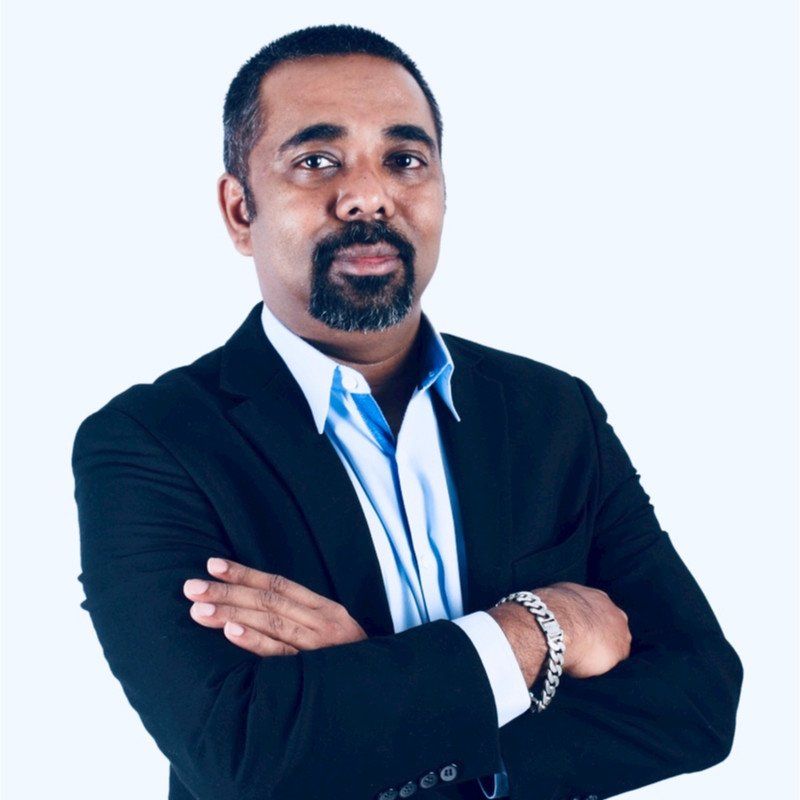Creating and Delivering Value to Customers

The fifth article in this series discussed the need for organisational change or transformation during turbulent times. References to changes that were forced to take place due to the COVID19 pandemic were made. The four constraints of transformation introduced by Roshan Thiran were discussed and the A.C.I.D.© test for transformation was introduced.
The topic of change and transformation is an interesting one because change is certain to happen to everyone throughout their career. In fact, without such changes, one would not be able to survive in any role for a sustained period of time.
As change or transformation will happen and it is certain to happen, any organisation embarking on this journey needs to reflect on its purpose for existence.
The Why of Creating and Delivering Value
For those of you that have read or seen videos on Start with Why by Simon Sinek would be familiar with the concept of golden circles. The idea is to start from the inner circle to the outer one. A business and the organisation that manages the business need to understand why it does what it does.
Peter Drucker, since his earliest publications, held that the purpose of a business was not to create profit (contrary to popular belief) but to create customers (why). A business exists to satisfy a customer’s need through the products or services it offers. Without a customer there is no market and therefore there is no demand, and hence what remains is only the potential. Converting the potential into an effective demand and the sale (how) is only possible when the value to the customer is realised and thereafter wealth is created by the business (what).
Drucker goes on to say that it is the customer who determines what a business is, from their willingness to pay for goods or services. What the customer buys and considers worthwhile is never just a product or a service but it is what a product or service does for him. Only from that purchase are economic resources converted into wealth, and resources into goods and services.
To emphasise the purpose of value creation further, in his book The Five Most Important Questions You Will Ever Ask About Your Organisation, three out of the five questions are centred around the customer and what the customer values. These five questions are:
- What is our mission? A business’s mission needs to take advantage of the opportunity, resources and processes that will satisfy the need of a customer.
- Who is our customer? The primary stakeholder whose problem or opportunity that your business addresses.
- What does the customer value? What is the value proposition and the value creation for the customer (and in turn the wealth for the business).
- What are our results? Identifying the key metrics and measures to assess the progress towards achieving the mission and opportunity.
- What is our plan? – Starting with the mission and followed through with the execution and action steps.
Again, from these five questions and also starting with why, it is clear that the sole purpose of a business is its customer.
It is the customer that defines the business, as it’s the value that a customer gets when a product or services is procured.
As customers are only concerned with their own values, requirements and reality, the answers to the first three questions need to reflect these beliefs. When an executive defines a business’s mission, care should be taken to not define the mission-based technology, or cost or retail pricing, but instead on the value it creates for its customer.
Clarity of the mission will help an organisation define the customer and the business itself. The customer is the primary stakeholder of the business as the customer is the one that actually procures the products or services. Management also needs to acknowledge the types of customers, more than often multiple personas instead of a single type. Different personas have different expectations and needs to be satisfied, and therefore buy different things.
Then the question is to answer what exactly does the customer value? A customer actually buys the value that is on offer. This value is very often a customer’s problem that is being solved. For example, the value that is offered by Amazon.com or Alibaba.com to its customer is the seamless marketplace platform that connects a producer to the consumer. Therefore, value is created to both types of customers (the producer and the consumer) and in turn wealth is generated to the organisation. Both Amazon’s or Alibaba’s purpose of existence wasn’t profit, but the value it could create defined its purpose. This concept of value creation isn’t something that existed since the 1900s.
For example, the Ford Motor Company produced automobiles in a shorter lead time by innovating the just-in-time production line. Its ability to do so enabled it to meet the rising demand for good and reliable automobiles at a competitive price. The value on offer was the shorter lead time.
The How of Creating and Delivering Value
It is worth reflecting upon the third and fourth parts of this article series that covered the topics of Theory of Business and the Spirit of Performance, two key areas of focus that require an executive to effectively organise its business to focus on delivering the value to its customers.
When one looks at an organisation from the highest level, it becomes quite clear that these internal and external respective points of view are important to determine the how of creating and delivering value.
An effective executive will use his acquired skills and practices to focus the organisation’s resources on tasks that create significant economic value. One of the first tasks is to identify the products and services that meet the customer’s needs and are generating the most value to the customer and wealth for the organisation.
The executive will have all the facts in the form of data and analysis of strength, weakness, opportunities and threats (SWOT). Analysis of sales performance, productivity, cost of products and services, contributions from the resources and cost centres are all important facts that need to be analysed before the Theory of Business can be developed.
A good SWOT analysis involves employees from all the organisation's levels to ensure everyone has a say. Businesses can use their strengths and weaknesses to create a positive customer experience. For example, a small business can leverage its good location to create a convenient and accessible customer experience.
In addition to that, the state of product and services portfolio need to be analysed. The executive needs to critically evaluate the state of the production or services infrastructure as well as the competency and capability of the resources that are delivering the portfolio. A clear baseline needs to be established, then evaluated against acceptable or targeted levels of performances, with customers’ expectations as the key performance indicator.
When creating and analysing product portfolios, consider using analytics tools and automation solutions. Analytics tools can help collect and analyse data about products and services, such as sales data, customer feedback, and market trends to identify which ones are performing well and those that need improvement.
On the other hand, automation solutions can help automate tasks related to product and service management, such as order processing, inventory management, and customer support. Automation software can help businesses focus on more strategic tasks, such as developing new products and services and improving customer experience.
Using the baseline and the targeted performance levels, gaps in terms of weakness and opportunities need to be identified. The differences between efficiencies and effectiveness also need to be established, and the corresponding resources allocated to the tasks and activities that create and deliver the products and services also need to be clearly known. It would be absolutely pointless to have highly efficient teams on products or services that are ineffective in terms of value creation for the customer.
These need to be identified and acknowledged by the management and the executive. The executive needs to know and accept the current state in terms of the Spirit of Performance, as this is a reflection of the external factors of the organisation, and most importantly a reflection on how much value has been created for the customers.
Finally, using facts from the analysis and the allocation, the executive would need to look internally and review the existing Theory of Business by asking “what needs to be done right now?” The Theory of Business, if regularly reviewed (annually or once in two to five years), will enable an organisation to identify what products or services are creating and adding value to the customers.
Using the facts that are established from the baseline analysis, the efficiency of allocation and the effectiveness of the productions and services, a decision can be made if the existing Theory of Business has to be changed. If it is not achieving its original purpose of creating customers and delivering value to them, then this is inevitable.
Considering the value of delivery you can be able to create a new customer base. Lets say, you need a better delivery, then you also need to comply with the compliances. Here customs compliance may ensure all documents and decide a global reach.
Thereafter the executive needs to lead an organisation by clearly communicating the new theory of business and emphasising the spirit of performance, with a priority on results that impact the customers. At the same time the executive must decide if the organisation needs to re-establish its structure, processes and culture. This can be done by reviewing the 4 Constraints model established by Leaderonomics as explained in the previous article.
The What of Creating and Delivering Value
If the ‘how’ looks at the effectiveness of an organisation when the Theory of Business is used as the foundation to execute the tasks that delivers customers’ value, enabled by the skills and knowledge that can be acquired, applied and practiced, then the ‘what’ focuses on the execution based on the Spirit of Performance.
Tasks and activities will need to be executed by teams of managers and employees that ensures the performance of the current products and services are delivered and at the same time teams of internal ‘entrepreneurs’ or ‘innovators’ that are given the time and resources to focus on the future through innovation and improvement.
At times, overcoming the 4 constraints of transformation becomes a necessity, as the internal aspects that impede managers, entrepreneurs and innovators from changing or transforming will not enable an organisation to create value. Peter Drucker alluded to this in his book iii; executives assuming that the future is an extension of the present will not result in the necessary change that would lead an organisation out from a challenging economic or business climate. Taking the Theory of Business and Spirit of Performance at heart, executive are recommended to conduct the A.C.I.D.© test for transformation.
Therefore, what are the principles for the A.C.I.D.© test for transformation (A.C.I.D. being the acronym for four different tests that an organisation should carry out)? These are the tests for Abandonment, Continuous Improvement, Innovation and Decision. The change in the business needs is a result of the changing need of the market, consumers and the customer. These changes are not distributed in a Gaussian Normal Distribution, and therefore the change is not easily predicted or anticipated.
However, if an organisation continuously measures its customer satisfaction and the level of value creation, empirically they should be able to identify the 10% to 20% of products and services that account for the 80% to 90% of the results. An executive’s main task is to deliver the results.
The A.C.I.D.© test for transformation is ‘what’ the executive needs to do. In times of change and transformation, the tests will help with the early diagnosis, preventive care and the cure that an organisation needs.
The testing begins with Abandonment, where the existing Theory of Business is tested and evaluated. Should the existing theory result in negative growth or loss in market share, rethinking the theory will become essential! Hard and tough actions need to be made to change the existing products and services, policies and practices. The executive will need to bring the entire organisation into alignment to face the new realities of business, the new market and the new environment. Nowadays, it's termed the ‘new normal’. The organisation will need to change its behaviour to be aligned with the newly defined mission.
From the early diagnosis, the tests for continuous improvements can be easily done. There are various established techniques and methodologies such as Lean Management, Kaizen or Lean Six Sigma, that an organisation can adopt to address and drive the behaviour of continuous improvement. A good executive will use the empirical analysis of 10%-20% that is delivering the results and inculcate the culture of continuous improvement.
Continuous improvement can be applied across all types of organisations and with today’s knowledge-based workforce, it can be easily adopted. It starts by looking at systems and processes and asking of each and every task: What does it do? What value does it create? Who benefits and is it really needed?
It is the preventive care that an organisation needs, ensuring that products and services that deliver value to the customers are made available faster, better and cheaper!
A crucial aspect of preventive care is customer journey orchestration, which can help create and deliver great value to customers. It involves personalising approaches through behavioural segmentation and product discovery funnelling.
Behavioural segmentation involves analysing customers’ behaviours according to set parameters, such as communication channels, demographics, and purchasing behaviours. On the other hand, product discovery funnelling provides customers with clear, accurate information about products and services to speed up the purchasing process.

Next would be to think about the cure. This means tests for innovation. To be an innovative organisation doesn’t mean that it needs to hire geniuses or highly decorated scientists or PhDs. Innovativeness can be taught and learnt. Resources should be trained with techniques and methodology such as ideation, design thinking, AGILE, SCRUM or TRIZ and many others to be innovative. If continuous improvement is focusing on existing products and processes (the preventive care), innovation is focusing on developing new products and processes (the cure).
Both tests have the common task of solving a customer’s problem. Threats that an organisation faces during its turbulent time should be converted into opportunities, focusing on the present and planning for the future. Creating value through innovation can be done by identifying incongruities, inefficiencies, market trends, changes in perception and knowledge on products and services.
Finally, the test of the executive are the decisions that can and will be executed. Decisions have to be made based on the greatest opportunity for creating value and delivering result, whereby the organisation agrees to overcome the four constraints by changing the business model, aligning and agreeing to decisions, establishing the right structure and providing the best systems to support the resources and leading with the Spirit of performance to ensure that a culture of change and transformation is established. Decisions should be prioritised based on:
- Products and services that will create value and results
- Products and services that require innovation
- Products and services that can be improved by adding value
With these decisions, executives need to focus on execution and are recommended to adopt concepts such as ‘management by objectives’ and ‘management by means’ to direct employees and resources toward achieving specific outcomes that enable the organisation to perform efficiently and effectively during a challenging period.
- Management by objectives (mbo) is a method whereby managers and employees define goals for every department, project and person to monitor performance.
- Management by means (mbm) is a method that focuses attention on the methods and processes used to achieve goals, key performance indicators and deliverables.
Concluding Thoughts
As a final word, it is apt to remind everyone that “Practices, though seemingly humdrum, can always be practiced, whatever a person's aptitudes, personality, or attitudes. Practices require no genius – only application. They are things to do rather than to talk about."
Quoting Peter Drucker:
Organisations need to start by thinking through what should be strengthened and built. They do not start by trying to save money. They start by trying to build performance.
All of these are practices. They can be taught, learnt, applied and practiced up til the highest level of perfection is achieved.
Start from the beginning of the series here.
Business
Tags: Covid-19, Executing Leadership, Quality, Research & Development, Companies
Arul is currently an independent consultant working on improving the component level supply chain for a popular electric vehicle brand and also enabling the disruption of delivery services with cloud based technology solutions. He formerly was with GEODIS as the regional director of transformation and as the MD of GEODIS Malaysia. In GEODIS, he executed regional transformation initiatives with the Asia Pacific team to leapfrog disruption in the supply chain industry by creating customer value proposition, reliable services and providing accurate information to customers. He has driven transformation initiatives for government services and also assisted various Malaysian and Multi-National Organisations using the Lean Six Sigma methodology.





